The energy and utilities sector is the vital engine powering our modern world, delivering the essential electricity, natural gas, and water we rely on daily. As our society evolves, the focus is shifting toward sustainable and resilient infrastructure to ensure a reliable future for all.
The Digital Transformation of the Grid
The digital transformation of the grid is revolutionizing our aging electrical infrastructure, evolving it into an intelligent, self-healing network. By integrating advanced sensors, smart meters, and sophisticated data analytics, utilities gain unprecedented real-time visibility and control. This enables a more resilient and efficient grid modernization, which is critical for seamlessly accommodating renewable energy sources and empowering consumers. This fundamental shift is not merely an upgrade; it is the essential foundation for a reliable, sustainable, and economically vibrant energy future, creating a more dynamic and responsive energy ecosystem for generations to come.
Implementing Smart Meters and IoT Sensors
The digital transformation of the grid is revolutionizing our aging energy infrastructure, creating a responsive and resilient smart grid. By integrating advanced sensors, IoT devices, and data analytics, utilities gain unprecedented real-time visibility and control. This shift enables distributed energy resources like solar and wind to be seamlessly incorporated, optimizing power flow and enhancing reliability. This modernization is the cornerstone of intelligent energy management, empowering a sustainable and efficient energy future where consumers actively participate in managing their usage.
Leveraging Big Data for Predictive Maintenance
The once-static electrical grid is awakening, becoming a responsive digital network. Smart meters and sensors now act as its nervous system, feeding real-time data to utilities. This smart grid technology allows for a dynamic dance between supply and demand, integrating renewable energy sources like wind and solar. It’s a transformation from a one-way power delivery system into an intelligent, self-healing mesh that anticipates outages and empowers consumers with control over their energy use.
**Q&A**
* **Q: How does this affect my electricity bill?**
* **A: The digital grid enables time-based rates, allowing you to save money by using major appliances when energy demand and cost are lower.**
Enhancing Cybersecurity for Critical Infrastructure
The digital transformation of the grid is revolutionizing power delivery by integrating advanced sensors, smart meters, and data analytics. This creates a two-way flow of information and electricity, enabling real-time monitoring and automated control. This shift is fundamental for building a resilient smart grid infrastructure capable of managing distributed energy resources like solar and wind, improving outage response, and empowering consumers with detailed usage data.
The Surge in Renewable Power Generation
The global energy landscape is undergoing a profound transformation, driven by a significant surge in renewable power generation. This expansion is no longer a niche trend but a central pillar of modern energy strategy, fundamentally reshaping electricity markets. For long-term resilience and cost stability, prioritizing the integration of renewable energy sources like solar and wind is paramount. This shift is critical for enhancing grid modernization efforts, requiring advanced infrastructure to manage intermittency and ensure a reliable, decarbonized power supply for future generations.
Integrating Large-Scale Solar and Wind Farms
The global energy landscape is undergoing a profound transformation, driven by the relentless surge in renewable power generation. Once a niche alternative, sources like solar and wind are now at the forefront of the fight against climate change, fundamentally reshaping how we power our world. This shift is fueled by a powerful combination of technological innovation, falling costs, and ambitious government policies, creating a virtuous cycle of growth and adoption. Global energy transition is no longer a distant goal but an accelerating reality.
This isn’t just an energy shift; it’s a complete re-imagining of our relationship with the planet’s resources.
From vast solar farms in sun-drenched deserts to towering offshore wind turbines harnessing ocean gusts, clean energy projects are becoming central pillars of national power grids, promising a more sustainable and resilient future for all.
Overcoming Intermittency with Advanced Storage
The global energy landscape is undergoing a profound transformation, driven by the relentless surge in renewable power generation. From vast solar farms blooming in deserts to towering wind turbines gracing coastlines, clean energy sources are being deployed at an unprecedented pace. This shift is not merely technological; it’s a collective turn towards a more sustainable future, fundamentally reshaping how we power our world and combat climate change. sustainable energy solutions are now at the forefront of this quiet revolution.
This rapid expansion has pushed renewables to consistently outpace fossil fuels in new capacity additions year after year.
This momentum is fueled by a powerful combination of factors: plummeting costs for solar panels and wind turbines, ambitious government policies, and growing corporate demand for clean electricity. Nations and businesses alike are recognizing that investing in renewables is both an environmental imperative and a sound economic strategy, securing energy independence while building a resilient grid for generations to come.
Managing Distributed Energy Resources
The global energy landscape is undergoing a seismic shift, driven by the unprecedented surge in renewable power generation. Nations are rapidly deploying solar arrays and wind farms, transforming how we produce electricity. This transition is propelled by falling technology costs and ambitious climate policies, moving the world toward a more resilient grid. The momentum is undeniable, with renewables now the fastest-growing energy source worldwide. This expansion is crucial for building a sustainable energy future and drastically cutting global carbon emissions.
Renewables are set to contribute 80% of new power capacity globally, marking a pivotal turning point in the energy transition.
This explosive growth is not just about megawatts; it’s about economic transformation. The sector is a major engine for job creation, fostering innovation in energy storage and smart grid technologies. As investment pours in, the promise of a cleaner, more decentralized, and affordable power system becomes a tangible reality for communities everywhere.
Modernizing Aging Infrastructure Systems
Our cities are built on a hidden framework of aging pipes, wires, and roads. Modernizing this infrastructure is a huge but essential task. It’s about more than just fixing potholes; it’s about upgrading entire systems for the 21st century. This means integrating smart technology to manage water flow and traffic, replacing lead pipes, and reinforcing bridges. The goal is to create a more resilient and efficient foundation for our communities, preventing costly emergencies and ensuring reliable services for everyone. It’s a crucial investment in our future safety and economic health.
Q: Why can’t we just keep patching things up?
A: Constant patches are a temporary and often more expensive fix. A full modernization, while a bigger project upfront, creates long-term savings, improves safety, and adds much-needed modern capabilities.
Prioritizing Pipe Replacement and Grid Hardening
Modernizing aging infrastructure systems is a critical step toward building resilient communities and ensuring economic competitiveness. This process involves upgrading outdated water mains, electrical grids, and transportation networks with smart technologies and durable materials. Proactive asset management is essential for preventing catastrophic failures and optimizing long-term public expenditure. A strategic, phased approach is far more cost-effective than reactive emergency repairs. Investing in these upgrades directly enhances public safety and supports sustainable urban development.
Adopting Trenchless Technologies for Minimal Disruption
Our cities are built upon a silent, aging skeleton of water pipes, electrical grids, and transportation arteries, many pushed far beyond their intended lifespan. This quiet crisis of deteriorating infrastructure demands a proactive modernization strategy. By integrating smart sensors and predictive analytics, we can shift from reactive repairs to intelligent, preventative management. This crucial infrastructure investment not only prevents catastrophic failures but also builds a foundation for a more resilient and efficient future, ensuring our communities can thrive for generations to come.
Investing in Resilience Against Climate Extremes
Modernizing aging infrastructure systems is a critical step toward building resilient communities. We’re not just fixing old pipes and roads; we’re upgrading them with smart technology and sustainable materials to handle future demands. This proactive approach to infrastructure modernization prevents costly emergencies and creates a foundation for economic growth. By investing now, we ensure our water, transportation, and energy networks are safer and more efficient for everyone.
Empowering the Prosumer and Consumer
The modern energy landscape is shifting from a one-way flow to a dynamic, two-way exchange, fundamentally empowering the prosumer. These individuals no longer just consume power; they generate it, typically through rooftop solar, and actively manage their usage with smart home technology. This evolution benefits all consumers by increasing grid resilience and fostering a more competitive market.
This democratization of energy allows households to directly control their costs and carbon footprint.
Ultimately, this movement towards a
decentralized energy system
gives both prosumers and traditional consumers greater autonomy, financial savings, and a direct role in the transition to a sustainable future.
The Rise of Rooftop Solar and Home Batteries
The rise of the **prosumer economy** is fundamentally reshaping the energy landscape, shifting individuals from passive ratepayers to active grid participants. This empowerment is driven by accessible technologies like rooftop solar panels, home battery storage, and smart thermostats. These tools grant consumers unprecedented control over their energy generation, consumption, and costs. For utilities, this creates both a challenge and an opportunity to develop new business models and dynamic pricing structures that integrate these distributed resources, fostering a more resilient and decentralized electrical grid.
Dynamic Pricing and Demand Response Programs
The energy landscape is shifting from a one-way grid to a dynamic, two-way street, fundamentally empowering the prosumer and consumer. Individuals are no longer passive bill-payers but active participants, generating their own solar power and selling excess energy back to the grid. This democratization of energy is fueled by smart home technologies that provide real-time usage data, enabling informed decisions to reduce costs and carbon footprints.
This transition turns every rooftop and battery into a potential node of a cleaner, more resilient power network.
The future is a decentralized system where everyone has the tools and economic incentive to take control, fostering both energy independence and collective environmental benefit.
Tools for Real-Time Consumption Monitoring
Empowering the prosumer and consumer is all about shifting control. Modern customers are no longer passive buyers; they are active participants who co-create value. This customer-centric business model thrives on feedback, customization, and transparency. By providing tools for personalization and actively listening to user input, companies build stronger loyalty. This collaborative relationship ensures products and services evolve in ways that truly matter to the people using them every day.
Navigating the Regulatory and Investment Landscape
Charting a course through the complex world of regulations and investment requires a deft hand and a clear map. Founders must constantly scan the horizon for shifting compliance requirements while simultaneously courting the right capital partners. It’s a delicate dance of building a compelling investment thesis that resonates with venture capitalists, all while ensuring every operational move adheres to an intricate web of legal frameworks. The true challenge lies in balancing this relentless dual focus. Successfully navigating this landscape is not just about securing funds; it’s about building a resilient enterprise that can thrive within the rules of the game, turning potential regulatory hurdles into strategic advantages.
Policy Incentives for Clean Technology Adoption
Navigating the regulatory and investment landscape is a tricky but essential part of any business strategy. You’re not just chasing capital; you’re also working to ensure full regulatory compliance across different regions. This dual focus helps you mitigate risks and build a sustainable, trustworthy operation. A solid grasp of these frameworks is a powerful competitive advantage, attracting savvy investors who value long-term stability over quick wins. Mastering this environment is fundamental for successful market entry and scaling your venture effectively.
Financing the Transition to a Low-Carbon Future
Successfully navigating the regulatory and investment landscape requires a proactive and integrated strategy. Investors must conduct thorough due diligence, not only on financial returns but also on the complex web of compliance obligations and policy shifts that can impact an asset’s viability. Strategic investment planning demands continuous monitoring of legislative changes and engaging with legal experts to mitigate unforeseen risks. A forward-looking approach turns regulatory hurdles into competitive advantages. By aligning your portfolio with stable, well-defined regulatory frameworks, you build a more resilient and sustainable investment future.
Ensuring Equitable Access and Affordability
Successfully navigating the regulatory and investment landscape requires a proactive and agile strategy. Companies must anticipate evolving compliance demands while simultaneously identifying high-growth opportunities. This dual focus is essential for securing capital and achieving market leadership. A robust compliance framework is not a barrier but a competitive advantage, building investor confidence and enabling sustainable scaling. Mastering this complex environment is fundamental to long-term business growth and market resilience, turning potential obstacles into a clear path for expansion.
Innovations in Water and Waste Management
Innovations in water and waste management are fundamentally reshaping urban infrastructure. Advanced membrane technologies and AI-driven monitoring systems now enable highly efficient water purification and real-time leak detection, significantly reducing non-revenue water. In the waste sector, the proliferation of advanced anaerobic digestion facilities is transforming organic waste into renewable energy and nutrient-rich fertilizers, creating a circular economy model. These integrated smart systems not only enhance resource recovery but also build critical resilience against climate-induced water stress and pollution, marking a pivotal shift from traditional linear disposal methods.
Q: What is the single most impactful innovation for a municipality to adopt?
A: Implementing a smart water grid with sensor networks offers the highest immediate return, drastically cutting water loss and operational costs while providing invaluable data for long-term planning.
Smart Water Networks for Leak Detection
The narrative of water and waste management is being rewritten by smart technology. Imagine a city where sensors embedded in pipes act as a nervous system, detecting leaks in real-time before they become crises, while advanced filtration systems transform wastewater directly into potable water. This paradigm shift towards a circular water economy is crucial for building resilient cities, turning our most precious resource from a linear flow into a sustainable, closed-loop cycle that conserves every drop.
Advanced Recycling and Waste-to-Energy Processes
Modern innovations in water and waste management are revolutionizing urban sustainability. Advanced systems https://pacpetro.net now leverage smart sensors and AI-powered analytics to optimize resource flow, detect leaks instantly, and enable predictive maintenance for critical infrastructure. This data-driven approach, a cornerstone of **sustainable urban water management**, extends to waste with robotic sorting and advanced anaerobic digestion, transforming refuse into renewable energy and closing the resource loop for a truly circular economy.
Promoting Circular Economy Principles
Innovations in water and waste management are revolutionizing urban sustainability through advanced technologies. Smart water grids utilize sensors and IoT connectivity to detect leaks in real-time, significantly reducing non-revenue water. In waste management, AI-powered optical sorting systems enhance recycling rates by accurately separating materials, while anaerobic digestion transforms organic waste into biogas, a renewable energy source. These solutions not only improve operational efficiency but also promote a circular economy by recovering valuable resources from what was previously considered refuse.




Leave a Reply